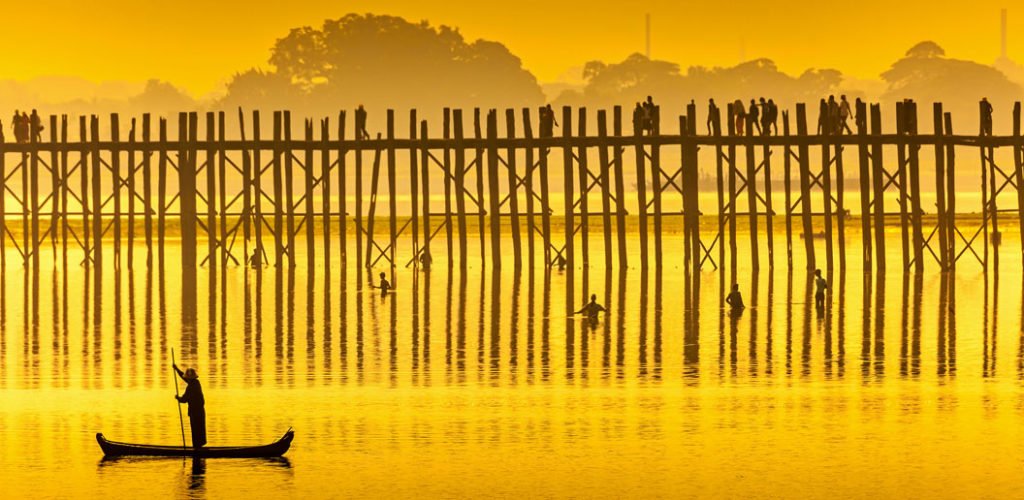 There are cities in the world which just have the right mix of ingredients to make of them authentic bastions of cultural diversity, coalescing history with heterogeneity and a chaos with a scrupulous architecture. While there are a handful of these the world around, few are as rich in history as the one which features in this month’s Let’s Go. Mixing rich Burmese heritage along with colonial traits as well as a very extensive mix of cultural diversity, this September, we travel to Mandalay, the economic and historic hub of upper Myanmar.
There are cities in the world which just have the right mix of ingredients to make of them authentic bastions of cultural diversity, coalescing history with heterogeneity and a chaos with a scrupulous architecture. While there are a handful of these the world around, few are as rich in history as the one which features in this month’s Let’s Go. Mixing rich Burmese heritage along with colonial traits as well as a very extensive mix of cultural diversity, this September, we travel to Mandalay, the economic and historic hub of upper Myanmar.
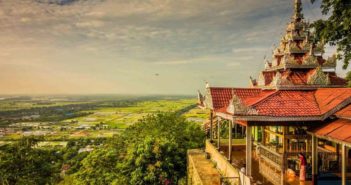 Those familiar with Asian terms will have already noticed the curious term embedded in the city’s name. Mandalay, which is named after the nearby Mandalay Hill, bears the term “mandala” in it. Mandalas are spiritual and symbols of religions such as Buddhism, but also Hinduism, which represent the world around us. Often symmetrical and very meticulously crafted, they represent soundness and balance, in masterpieces often mesmerizing due to their sober complexity. It’s this that we could compare this former ancient capital too, as many of its ancient maps display neatly ordered city, in carefully crafted square blocks and central districts which outstretch in synch. Founded and commissioned as the new capital of Burma during the mid 19th century, Mandalay became king Mindon’s wish to mark the auspicious anniversary celebrating the 2,400th jubilee of Buddhism. Carefully crafted and surrounded by the flows of three different rivers, Mandalay became one of the economic hubs of the region amid flows of beautifully engineered infrastructure and architecture.
Those familiar with Asian terms will have already noticed the curious term embedded in the city’s name. Mandalay, which is named after the nearby Mandalay Hill, bears the term “mandala” in it. Mandalas are spiritual and symbols of religions such as Buddhism, but also Hinduism, which represent the world around us. Often symmetrical and very meticulously crafted, they represent soundness and balance, in masterpieces often mesmerizing due to their sober complexity. It’s this that we could compare this former ancient capital too, as many of its ancient maps display neatly ordered city, in carefully crafted square blocks and central districts which outstretch in synch. Founded and commissioned as the new capital of Burma during the mid 19th century, Mandalay became king Mindon’s wish to mark the auspicious anniversary celebrating the 2,400th jubilee of Buddhism. Carefully crafted and surrounded by the flows of three different rivers, Mandalay became one of the economic hubs of the region amid flows of beautifully engineered infrastructure and architecture.
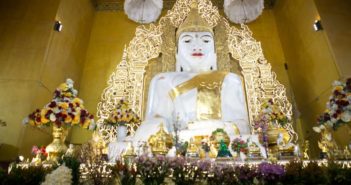 The advent of British colonialism merely a quarter of a century on, would significantly influence Mandalay’s role in the face of Burma’s hubs of trade. Yangon, which featured in our last issue, started to become the country’s main port of commerce and executive importance, thus relegating Mandalay to a role beyond that of the country’s economic hub. Instead, Mandalay was to become a centre for Buddhist teachings and cultural displays, making it the symbol of independent sovereignty for the Burmese people.
The advent of British colonialism merely a quarter of a century on, would significantly influence Mandalay’s role in the face of Burma’s hubs of trade. Yangon, which featured in our last issue, started to become the country’s main port of commerce and executive importance, thus relegating Mandalay to a role beyond that of the country’s economic hub. Instead, Mandalay was to become a centre for Buddhist teachings and cultural displays, making it the symbol of independent sovereignty for the Burmese people.
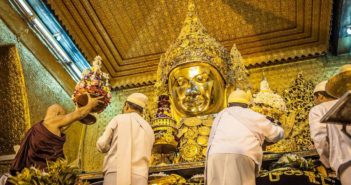 Mandalay’s cultural heterogeneity was further powered by the large influx of Indian immigrants that resulted as a result of the British Raj’s dominion on India. Mandalay was to keep its symbolism of independence and its name as the bastion of Buddhism in Burma upon the gaining of independence in 1948, further cementing the cultural strength attributed to it. Moreover, most learning centres about Buddhism around the country were single handedly run by offshoots of Mandalay University.
Mandalay’s cultural heterogeneity was further powered by the large influx of Indian immigrants that resulted as a result of the British Raj’s dominion on India. Mandalay was to keep its symbolism of independence and its name as the bastion of Buddhism in Burma upon the gaining of independence in 1948, further cementing the cultural strength attributed to it. Moreover, most learning centres about Buddhism around the country were single handedly run by offshoots of Mandalay University.
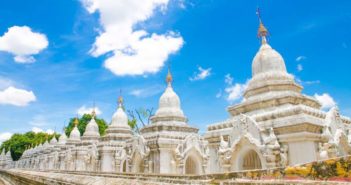 Mandalay as a city decayed under the rule of Ne Win, who had all but forsaken the infrastructural maintenance of its architectonic beauty. With it came a number of fires that destroyed many buildings, the grounds of which were purchased by Chinse businessmen from Yunnan. It is this way that settlers upon settlers, Mandalay owes its unique ethnic make up to its rich past.
Mandalay as a city decayed under the rule of Ne Win, who had all but forsaken the infrastructural maintenance of its architectonic beauty. With it came a number of fires that destroyed many buildings, the grounds of which were purchased by Chinse businessmen from Yunnan. It is this way that settlers upon settlers, Mandalay owes its unique ethnic make up to its rich past.
The city’s urban sprawl today has continued to garner heavy investment on the part of the Chinese, who are considered the agents leading this change.
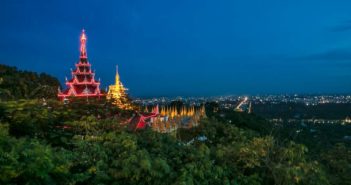 Modern day Mandalay has therefore a rich demographic diversity, within its population of about a million people, it is not just home to the traditional Bamar majority but more and more, it is a home to a large array of Chinese people, which provide much needed activity in its commercial districts, especially Chinatown. There are too an important quantity of Burmese Indians, who established themselves during the colonial period and today have come to provide a rich diversity in the scene across the city.
Modern day Mandalay has therefore a rich demographic diversity, within its population of about a million people, it is not just home to the traditional Bamar majority but more and more, it is a home to a large array of Chinese people, which provide much needed activity in its commercial districts, especially Chinatown. There are too an important quantity of Burmese Indians, who established themselves during the colonial period and today have come to provide a rich diversity in the scene across the city.
Mandalay is situated by the famous Irrawaddy River and has both a tropical wet and a dry season. It sees considerable heat increments toward the months of March, April and May before the downpours are almost daily.
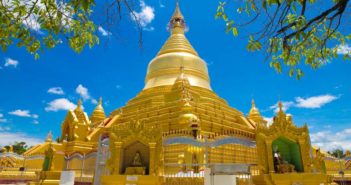 But if there is one thing that distinguishes this city from the rest, it’s the amount of different historic sites one can visit. The most prominent one of these is the Kuthodaw Pagoda. Kind Mindon commissioned this structure to date contains the world’s largest book in the form of concrete slabs. Each tablet, which is embedded in the walls of the various stupas that comprise the structure, has its own jewel and decoration. The British rule hampered the beauty of this structure, as they looted many of the relics within, which would only later be restored as a petition was made to queen Victoria.
But if there is one thing that distinguishes this city from the rest, it’s the amount of different historic sites one can visit. The most prominent one of these is the Kuthodaw Pagoda. Kind Mindon commissioned this structure to date contains the world’s largest book in the form of concrete slabs. Each tablet, which is embedded in the walls of the various stupas that comprise the structure, has its own jewel and decoration. The British rule hampered the beauty of this structure, as they looted many of the relics within, which would only later be restored as a petition was made to queen Victoria.
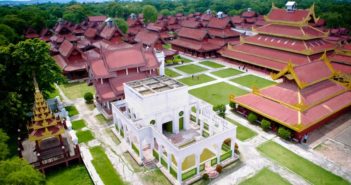 Mandalay Palace is a symbol of the last Burmese monarchy, as the grounds where they last inhabited before the country became a republic. Surrounded by a moat and at the centre of the capital back when it was built, the Mandalay palace is one of the most prominent sites to visit in the city. As with the Kuthodaw Pagoda, a large array of the palace’s relics were looted by the British, some of which continue to be displayed at the Victoria and Albert Museum in the United Kingdom. Burned to the ground during the Second World War, it was later reconstructed in 1989, when a project to restore its previous beauty was started. This was a problem because of the lack of budget from the reforming committee, which later had to seek support from private funding in order to sustain itself.
Mandalay Palace is a symbol of the last Burmese monarchy, as the grounds where they last inhabited before the country became a republic. Surrounded by a moat and at the centre of the capital back when it was built, the Mandalay palace is one of the most prominent sites to visit in the city. As with the Kuthodaw Pagoda, a large array of the palace’s relics were looted by the British, some of which continue to be displayed at the Victoria and Albert Museum in the United Kingdom. Burned to the ground during the Second World War, it was later reconstructed in 1989, when a project to restore its previous beauty was started. This was a problem because of the lack of budget from the reforming committee, which later had to seek support from private funding in order to sustain itself.
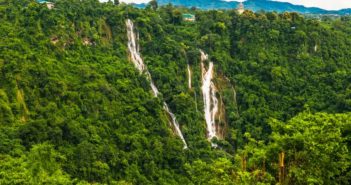 Another place essential in the travel plans of anyone planning to visit Mandalay is the Mandalay Hill, after which the city is allegedly named. A towering natural structure which elevates almost 225 metres in height, Mandalay Hill provides a perfect viewpoint for the curious holidaymaker who wishes to see the city below in all of its grandeur and splendour, as it affords the opportunity to take a full panoramic view of the ancient capital. A trek up the hill is a pastime some enjoy, as it allows them to gradually see take in the nature while they continue to strive for the view from the top. During World War Two, Mandalay hill became the scenario for important battles confronting the Japanese army and the British troops, as they fought it out to gain supremacy of the top, with the latter eventually forcing the Nippon army out of the grounds.
Another place essential in the travel plans of anyone planning to visit Mandalay is the Mandalay Hill, after which the city is allegedly named. A towering natural structure which elevates almost 225 metres in height, Mandalay Hill provides a perfect viewpoint for the curious holidaymaker who wishes to see the city below in all of its grandeur and splendour, as it affords the opportunity to take a full panoramic view of the ancient capital. A trek up the hill is a pastime some enjoy, as it allows them to gradually see take in the nature while they continue to strive for the view from the top. During World War Two, Mandalay hill became the scenario for important battles confronting the Japanese army and the British troops, as they fought it out to gain supremacy of the top, with the latter eventually forcing the Nippon army out of the grounds.
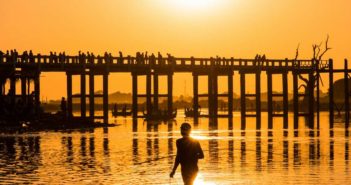 Getting to Mandalay is easy from Bangkok. While the Mandalay International Airport is one of the most modern and well equipped in the country, it generally suffers from under-usage, as it only serves scant domestic flights and two destinations outside the country. Luckily, one of those destinations is Thailand, and visitors can make their way into the country both from Suvarnabhumi Airport and from Chiang Mai International Airport. The airport is considerably far from the main city, at about 45 kilometres from Mandalay.
Getting to Mandalay is easy from Bangkok. While the Mandalay International Airport is one of the most modern and well equipped in the country, it generally suffers from under-usage, as it only serves scant domestic flights and two destinations outside the country. Luckily, one of those destinations is Thailand, and visitors can make their way into the country both from Suvarnabhumi Airport and from Chiang Mai International Airport. The airport is considerably far from the main city, at about 45 kilometres from Mandalay.
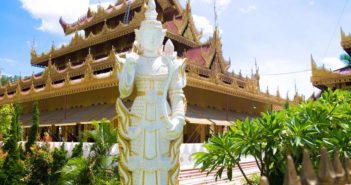 Mandalay is one of those cities that makes one fall for its charm, perhaps not immediately, but eventually. Laden with a luscious culture and an absolutely magnificent set-up, it is a perfect place for the adventurous holiday goer. It provides not only an element of traditional richness, but also has great structures and monuments to display, making it one of the most attractive cities to visit in the entire country. In definitive, there is a little point of interest for everyone in Mandalay, so if you have yet to visit this ancient city, you most definitely must.
Mandalay is one of those cities that makes one fall for its charm, perhaps not immediately, but eventually. Laden with a luscious culture and an absolutely magnificent set-up, it is a perfect place for the adventurous holiday goer. It provides not only an element of traditional richness, but also has great structures and monuments to display, making it one of the most attractive cities to visit in the entire country. In definitive, there is a little point of interest for everyone in Mandalay, so if you have yet to visit this ancient city, you most definitely must.


